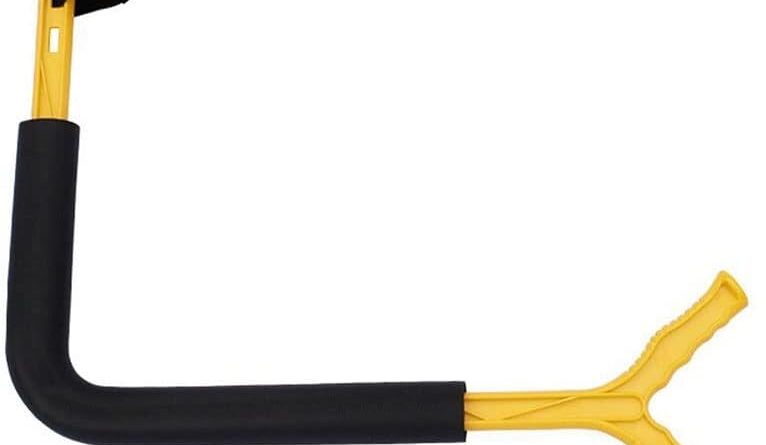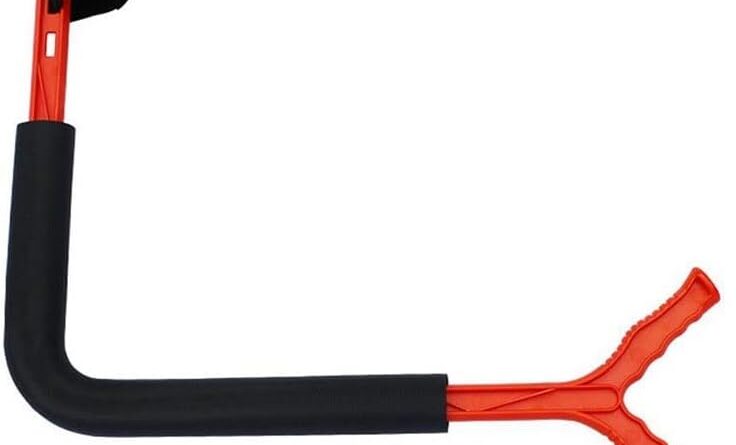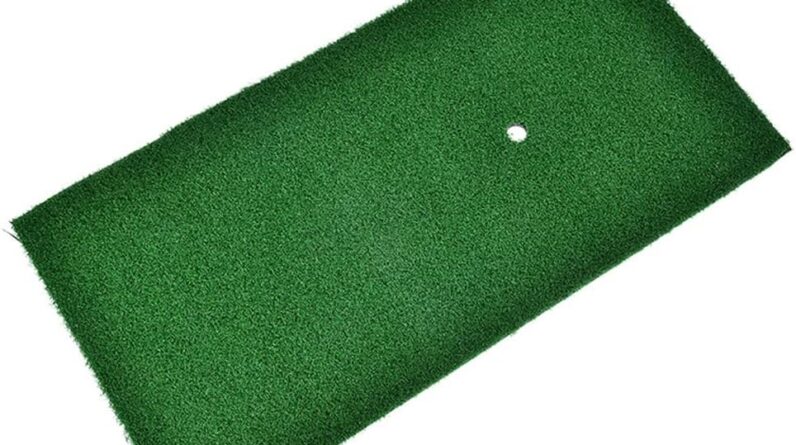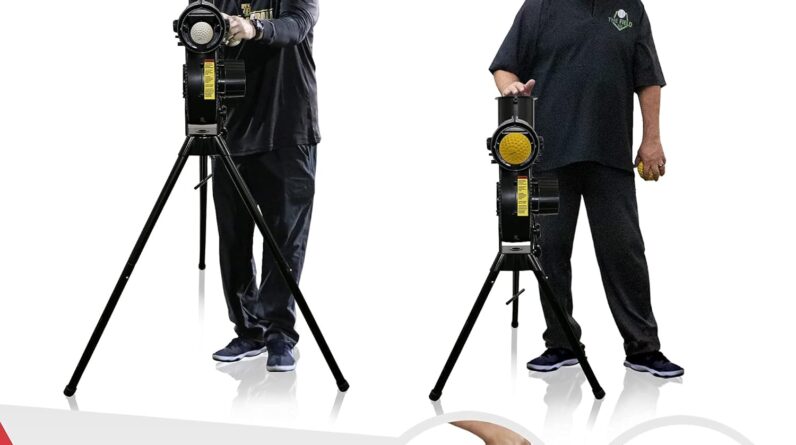Have you ever found yourself struggling to accurately gauge the distance with your wedge shots? Fear no more, as this article will provide you with a range of effective strategies to help you dial in your wedge distances. Whether it’s utilizing yardage markers, practicing with different clubs, or experimenting with different swing lengths, you’ll discover useful tips that will improve your accuracy and precision on the golf course. So, get ready to fine-tune your wedge game and leave your fellow golfers in awe with your newfound distance control.
Choosing the Right Wedge
Loft Selection
When it comes to choosing the right wedge, a crucial factor to consider is loft selection. The loft of a wedge determines the trajectory and distance of your shots. Typically, wedges are available in various lofts ranging from 46 degrees (approaching pitching wedge range) to 62 degrees (approaching lob wedge range).
The loft you choose will depend on your personal preference and the specific gaps you are trying to fill in your yardage. It’s important to have a well-rounded set of wedges that cover different loft ranges, ensuring you can tackle various distances around the green.
Clubhead Design
Another aspect to pay attention to is the clubhead design. Different wedge models have varying designs that can affect your shots. Some designs prioritize forgiveness and ease of use, while others focus on generating maximum spin and control.
Consider factors such as the size and shape of the clubhead, as well as the sole and groove design. Experimenting with different clubhead designs can help you find the one that suits your swing and shot preferences the best.
Bounce and Grind Options
Bounce and grind options are essential considerations when choosing a wedge. The bounce of a wedge refers to the angle between the leading edge and the sole. It helps the club glide smoothly through the turf, preventing excessive digging or bouncing.
Different bounce options are suitable for different playing conditions. For example, a high bounce wedge is ideal for soft or fluffy sand, while a low bounce wedge is better suited for firm turf. Grind options further refine the sole’s shape, allowing you to manipulate the club’s interaction with the ground.
Understanding the concept of bounce and grind options and finding the right combination for your playing style can greatly enhance your wedge performance.
Understanding Yardage Gaps
Gapping Analysis
To dial in your wedge distances effectively, it is essential to perform a gapping analysis. This analysis involves assessing the yardage covered by each of your wedges and identifying any significant gaps or overlaps.
During a gapping analysis, use a reliable range-finding device or consult a golf professional to accurately measure the distance you hit each wedge. Plotting these distances on a chart or spreadsheet will help you identify any yardage gaps that need to be addressed.
Hitting Range Sessions
Once you identify the yardage gaps, it’s time to work on bridging them. Hitting range sessions dedicated to wedge play will allow you to focus on fine-tuning your distances and improving consistency.
During these range sessions, experiment with different swings and club selections to optimize your wedge performance. Pay attention to the feel and feedback of each shot, adjusting your technique and club selection as necessary to achieve the desired yardages.
Practicing wedge shots on the range regularly will enable you to develop a better sense of distance control and improve your overall scoring potential.

Developing a Consistent Swing
Proper Grip and Setup
A consistent swing is crucial for precise wedge play. It all starts with a proper grip and setup. Ensure that you grip the club comfortably, neither too tight nor too loose. A neutral grip will promote a natural release through impact.
When setting up for a wedge shot, aim to position the ball slightly ahead of center in your stance. This ball position will promote a slightly descending strike and help create desirable spin and control. Furthermore, align your feet, hips, and shoulders parallel to the target line, ensuring proper alignment for accurate shots.
Body Rotation and Weight Shift
To maximize the distance and accuracy of your wedge shots, pay attention to your body rotation and weight shift. Engaging your core muscles and rotating your body through impact will generate the power needed for a successful shot.
During the swing, shift your weight onto your front foot, allowing for a crisp and clean strike. This weight transfer promotes a downward strike, imparting spin and control on the golf ball. Practice incorporating proper body rotation and weight shift into your swing to develop consistency.
Maintaining Tempo and Rhythm
Consistency in wedge play also relies heavily on maintaining a smooth and balanced tempo. Rushing or decelerating through the shot can lead to inconsistent distances and inaccurate strikes.
Focus on maintaining a consistent rhythm throughout your swing, ensuring your backswing and downswing flow seamlessly. A smooth tempo will facilitate proper clubhead acceleration and a solid strike, resulting in more controlled and accurate wedge shots.
Mastering Distance Control
Length of Backswing
Mastering distance control with wedges requires an understanding of the length of your backswing. The length of your backswing will dictate the distance the ball travels. It’s important to learn how different backswing lengths correlate to specific yardages with your wedges.
To improve control, practice taking partial backswings while still maintaining a consistent rhythm and tempo. This allows you to have more versatility in your distances, especially when faced with shorter shots around the green.
Acceleration and Deceleration
Another key aspect of distance control is the proper acceleration and deceleration of your swing. Matching the swing speed to the desired distance is essential in controlling the trajectory and spin of your wedge shots.
As you swing through impact, focus on accelerating the club smoothly, ensuring a crisp strike on the ball. Avoid any sudden deceleration or “hit” at impact, as it can result in inconsistent distances and directional control. Developing a sense of control over your swing’s acceleration and deceleration will significantly improve your distance control with wedges.
Clubface Control
Clubface control plays a vital role in distance control. Slight variations in clubface angle can significantly affect the ball’s flight and roll-out. Develop a keen sense of clubface control by practicing hitting wedge shots with a specific target in mind.
Focus on aligning the clubface squarely with the target at impact. Pay attention to the clubface angle during your practice sessions and make adjustments as necessary to consistently and accurately control your wedge distances.

Experimenting with Different Shots
Flighting Wedge Shots
Flighting wedge shots refers to controlling the trajectory of the ball to optimize distance and control. Experimenting with different flights can give you added versatility in various playing conditions.
To flight your wedge shots, focus on altering the club’s angle of attack, swing speed, and follow-through. For lower shots, position the ball slightly back in your stance, de-loft the clubface, and make a controlled, shallow swing. For higher shots, position the ball slightly forward, open the clubface, and generate more speed and loft through impact.
Being able to flight your wedge shots effectively will equip you with the tools to adapt to different situations on the course.
Spin Control Techniques
Having the ability to control spin on wedge shots sets you apart in terms of shot-making capabilities. Experimenting with different spin control techniques can help you maintain optimal control and stopping power on the greens.
To generate more spin, focus on a clean, downward strike, and create maximum compression on the ball. Additionally, ensure your club grooves are clean and in good condition to enhance spin production.
Experiment with different types of balls and vary your club selection to explore different spin control options. With practice, you’ll develop an understanding of how to manipulate spin to your advantage, allowing you to attack pins and navigate challenging greens with confidence.
Using Different Ball Positions
Adjusting your ball position can have a significant impact on shot outcome and shot shape. By experimenting with different ball positions, you can fine-tune your wedge game and explore additional shot options.
Moving the ball slightly forward in your stance tends to promote higher, softer shots with less spin. Conversely, positioning the ball back in your stance can result in lower, more penetrating shots with increased spin.
Experimenting with various ball positions during practice rounds or on the range will help you understand how different positions affect the trajectory and spin of your wedge shots. This knowledge will come in handy when playing on courses with varying green conditions.
Understanding Green Conditions
Reading the Green
Understanding how to read greens is a crucial skill for successful wedge play. By reading the green correctly, you can predict how the ball will break and plan your approach accordingly.
When assessing a green, analyze its overall slope, as well as any subtle undulations or contours that may affect the ball’s roll. Pay attention to the surrounding terrain, including the position of the hole relative to slopes, ridges, and other features that may influence the ball’s path.
Taking the time to read and interpret the green’s characteristics will help you judge where to land your wedge shots and how the ball will behave once it reaches the green.
Assessing Slopes and Speed
Slopes and speed are two factors that greatly impact wedge shots. When approaching a green, consider the slopes you will encounter along the way and understand how they will influence the ball’s roll and behavior.
Uphill slopes tend to slow down the ball, while downhill slopes can increase its speed. Side slopes, on the other hand, can cause the ball to break more severely in one direction. Take these slope conditions into account when planning your wedge shots to ensure you not only reach the green but also position yourself favorably for a successful putt.
Furthermore, pay attention to the speed of the greens. Faster greens require more precise distance control and touch. Adjust your wedge shots accordingly to account for varying green speeds and achieve greater control over your distances.
Adjusting for Green Firmness and Receptiveness
Green firmness and receptiveness can have a significant impact on wedge shots’ performance and outcome. Firm greens tend to produce less spin and less stopping power, requiring you to adjust your approach accordingly.
When confronted with firm greens, consider taking a more aggressive approach by landing the ball shorter and allowing for a controlled rollout towards the target. On receptive greens, where the ball grips and stops more easily, you can be more aggressive in attacking pins and generating spin.
Adjusting your wedge shots based on the firmness and receptiveness of the greens will help you adapt to different course conditions and optimize your scores.
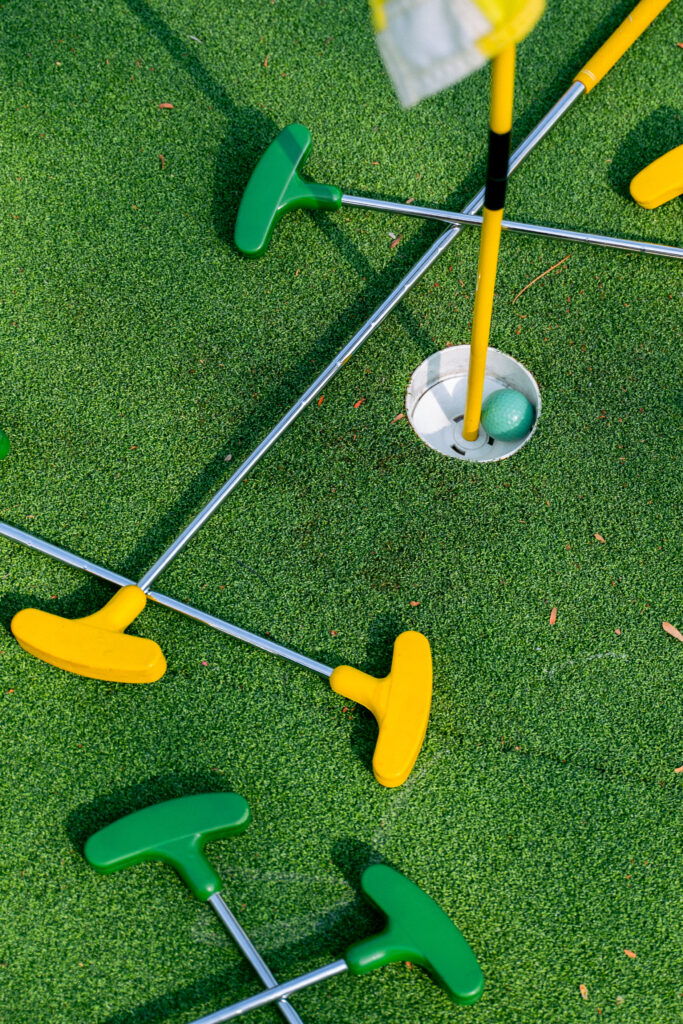
Utilizing Technology and Data
Relying on Launch Monitors
Harnessing the power of technology can greatly aid in dialing in your wedge distances. Utilize launch monitors to gain valuable insights into your shots, such as carry distance, total distance, spin rate, and launch angle.
By capturing important data through launch monitors, you can identify any discrepancies in your distances and fine-tune your technique accordingly. Adjusting factors such as club selection, swing speed, or launch angle can result in more accurate and consistent wedge shots.
Embrace the technological advancements of launch monitors to gain a better understanding of your wedge game and make informed adjustments for improved performance on the course.
Using Shot Tracking Apps
Shot tracking apps are another valuable tool at your disposal when dialing in your wedge distances. These apps track your shots on the course, recording factors such as distance, accuracy, and club used.
By analyzing the data collected from shot tracking apps, you can identify trends and patterns in your wedge play and pinpoint areas for improvement. These apps often provide statistical breakdowns, allowing you to assess your performance on specific yardages, shot shapes, or playing conditions.
Incorporating shot tracking apps into your practice routine and on-course play can give you a comprehensive overview of your wedge game and aid in identifying areas of strength and areas needing improvement.
Analyzing Statistics
Analyzing statistics is a critical step in dialing in your wedge distances. By reviewing your performance data, you can gain valuable insights into your strengths and weaknesses, guiding your efforts to focus on the areas that need improvement.
Pay attention to key statistics such as proximity to the hole, greens in regulation, up and downs, and scrambling percentage. These metrics will help you assess your overall wedge performance, identify trends, and set meaningful goals for improvement.
By regularly reviewing and analyzing your statistics, you can track your progress and make informed adjustments to your wedge game, ultimately leading to more confident and successful shots around the green.
Practicing with Purpose
Targeted Practice Drills
Practicing with purpose is essential for dialing in your wedge distances. Incorporate targeted practice drills into your training routine to sharpen your skills and improve consistency.
Design drills that focus on specific yardages, shot shapes, or trajectories. For example, you can set up targets at different distances and practice landing your wedge shots within those target zones. Alternatively, you can simulate on-course scenarios, such as hitting from different lies or incorporating obstacles to add variability and challenge.
Targeted practice drills enable you to refine your technique, gain confidence, and reinforce the muscle memory necessary for consistent wedge play.
Simulating On-course Scenarios
Practicing wedge shots in simulated on-course scenarios is an effective strategy for developing versatility and adaptability. Mimicking real-world playing conditions challenges your ability to make strategic decisions and execute precise shots.
Create practice rounds that replicate specific situations you commonly encounter on the course. Practice shots from tight lies, uneven lies, and deep rough to enhance your ability to adjust your swing and club selection accordingly. Work on shots from various distances, angles, and obstacles to prepare yourself for any situation that arises during a round.
By simulating on-course scenarios during your practice sessions, you’ll be better equipped to handle the challenges and make better decisions when faced with similar situations on the actual course.
Building Confidence through Repetition
Repetition is key to building confidence and muscle memory in your wedge game. During practice, focus on repeating specific shots and techniques multiple times to reinforce and refine your skills.
By hitting a large number of wedge shots within a specific distance range, you develop a better sense of the required swing and feel for that distance. The more you repeat these shots, the more confident and consistent you will become in your ability to execute them accurately during a round.
Building confidence through repetition not only helps with your yardage control but also enables you to approach wedge shots with a calm and focused mindset.
Evaluating and Adjusting Techniques
Reviewing Performance Data
On your journey to dialing in your wedge distances, reviewing your performance data is essential. By evaluating objective data such as launch monitor or shot tracking statistics, you can identify areas for improvement and adjust your techniques accordingly.
Look for patterns or trends in your data that indicate areas needing attention. For example, if you consistently fall short on specific distances, it may be necessary to adjust your club selection or increase your swing speed. Identifying these patterns will guide your efforts towards making appropriate changes to bridge any yardage gaps.
Regularly reviewing and evaluating your performance data will enable you to fine-tune your techniques and enhance your overall wedge play.
Seeking Professional Instruction
Engaging the services of a professional golf instructor is a valuable step in dialing in your wedge distances. A qualified instructor can analyze your swing, technique, and shot patterns to identify areas for improvement.
Working with an instructor allows you to receive personalized guidance and feedback, helping you refine your wedge game and enhance your distance control. They can provide you with specific drills and exercises tailored to address your weaknesses, accelerating your progress in dialing in your distances.
With their expertise and guidance, a professional instructor can provide valuable insights into your wedge play and offer concrete strategies for improvement.
Making Appropriate Changes
Based on the feedback received from analyzing your performance data and working with a professional instructor, make appropriate changes to your techniques. Implementing the necessary adjustments will help fine-tune your wedge game and optimize your distance control.
Whether it’s modifying your grip, making swing changes, or adjusting your club selection, be open to embracing change and trust the process. Persistently practice and reinforce the new techniques until they become second nature, leading to improved results on the course.
Remember, making appropriate changes may require some patience and dedication, but the rewards of dialing in your wedge distances will greatly improve your overall golf game.
Mindset and Mental Approach
Visualizing and Imagining Shots
Your mindset and mental approach play a vital role in dialing in your wedge distances. Before every wedge shot, take the time to visualize and imagine the desired outcome.
Mentally rehearsing the shot in your mind helps create a clear picture of what you intend to achieve. Visualize the trajectory, the ball landing on the target, and the intended amount of spin or roll-out. This mental imagery primes your brain and muscles for executing the shot with precision.
By consistently visualizing and imagining shots during practice and on the course, you cultivate a positive mindset and increase your chances of executing the desired distance and shot shape.
Creating a Pre-shot Routine
Developing a pre-shot routine is a valuable tool for maintaining focus and consistency in wedge play. A pre-shot routine serves as a mental and physical anchor, helping you prepare for each shot and eliminate distractions.
Your routine may include steps such as visualizing the shot, taking a deep breath to calm your nerves, aligning your body and clubface, and rehearsing the swing in your mind. By following a consistent pre-shot routine, you create a sense of familiarity and confidence, allowing you to execute your wedge shots with greater poise and control.
Craft a routine that suits your personal preferences and practice it repetitively until it becomes ingrained in your golfing routine.
Managing Pressure and Expectations
Managing pressure and expectations is crucial when dialing in your wedge distances. Wedge shots near the green often carry a high importance, as they can greatly affect your scoring opportunities.
To manage pressure effectively, focus on staying present and in the moment. Avoid overthinking or dwelling on past shots. Instead, channel your energy into executing each shot to the best of your ability.
Set realistic expectations for yourself and acknowledge that not every shot will be perfect. By maintaining a positive mindset and focusing on the process rather than solely on results, you create a conducive environment for dialing in your wedge distances.
Remember, it’s all part of the learning process, and with practice, patience, and a positive mindset, you will continue to make progress and improve your wedge play.
In conclusion, dialing in your wedge distances requires a holistic approach. By carefully considering factors such as loft selection, clubhead design, and bounce options, you can build a versatile wedge arsenal suited to your needs. Understand the importance of gapping analysis and hitting range sessions to refine your distances effectively. Work on developing a consistent swing through proper grip and setup, body rotation and weight shift, and maintaining tempo and rhythm. Master distance control by focusing on the length of your backswing, acceleration, deceleration, and clubface control. Experiment with different shots, flighting wedge shots, spin control techniques, and using different ball positions to enhance your versatility. Understand the impact of green conditions, such as reading the green, assessing slopes and speed, and adjusting for green firmness and receptiveness. Utilize technology and data through launch monitors, shot tracking apps, and analyzing statistics to gain valuable insights into your wedge game. Practicing with purpose, evaluating and adjusting techniques, and adopting a positive mindset and mental approach are crucial in dialing in your wedge distances. With dedication, practice, and the right mindset, you can significantly improve your wedge play and lower your scores on the golf course.


